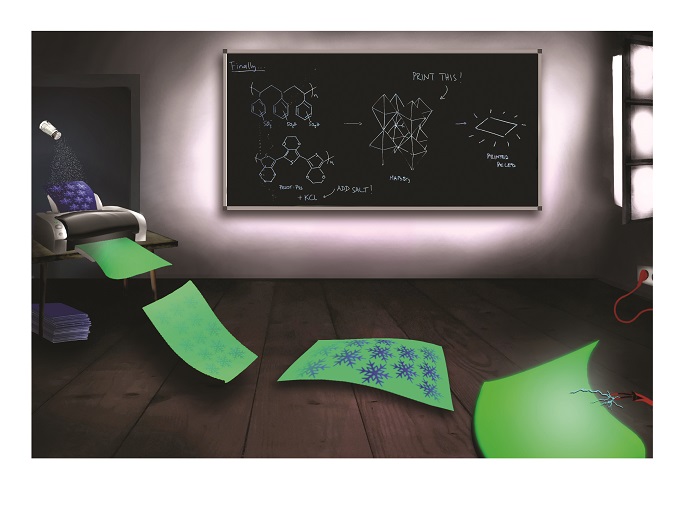By Gina Roos, editor-in-chief
A team of researchers from Helmholtz-Zentrum Berlin (HZB) and Humboldt-Universität zu Berlin (HU Berlin) has manufactured LEDs from a hybrid perovskite semiconductor material using inkjet printing. Researchers at HZB, and others, have shown that solar cells could be printed from perovskites, but this is the first time the team has produced LEDs using this process. The researchers said that this opens the door to broad application in manufacturing different types of electronic components.
The hybrid perovskite materials can be used to produce different microelectronic components by modifying their composition, said Professor Emil List-Kratochvil, head of a Joint Research Group at HZB and Humboldt-Universität, and they can be produced from a liquid solution, enabling the component to be built one layer at a time on the substrate.

Image: Claudia Rothkirch/HU Berlin
Although the material promises high efficiency in generating light, it has been difficult to process until now.
“It has not been possible to produce these kinds of semiconductor layers with sufficient quality from a liquid solution,” said List-Kratochvil in a statement. “The challenge was how to cause the salt-like precursor that we printed onto the substrate to crystallize quickly and evenly by using some sort of an attractant or catalyst.”
The solution was a seed crystal. The salt crystal attaches to the substrate and triggers a gridwork formation for the subsequent perovskite layers. The result: printed LEDs with higher luminosity and considerably better electrical properties than could be previously achieved using additive manufacturing processes, said researchers.
List-Kratochvil believes that future micro- and optoelectronics will be based exclusively on hybrid perovskite semiconductors. The researcher plans to manufacture other electronic components in the laboratories of HZB and HU Berlin.
A team jointly headed by List-Kratochvil and HZB scientist Dr. Eva Unger is working in the Helmholtz Innovation Lab HySPRINT on the development of coating and printing processes for hybrid perovskites. These are crystals with a perovskite structure that contain both inorganic and organic components.
The work, “ Finally, inkjet-printed metal-halide perovskite LEDs – utilizing seed-crystal templating of salty PEDOT:PSS” was published in Materials Horizons, the journal of the Royal Society of Chemistry.
Advertisement
Learn more about Electronic Products Magazine





